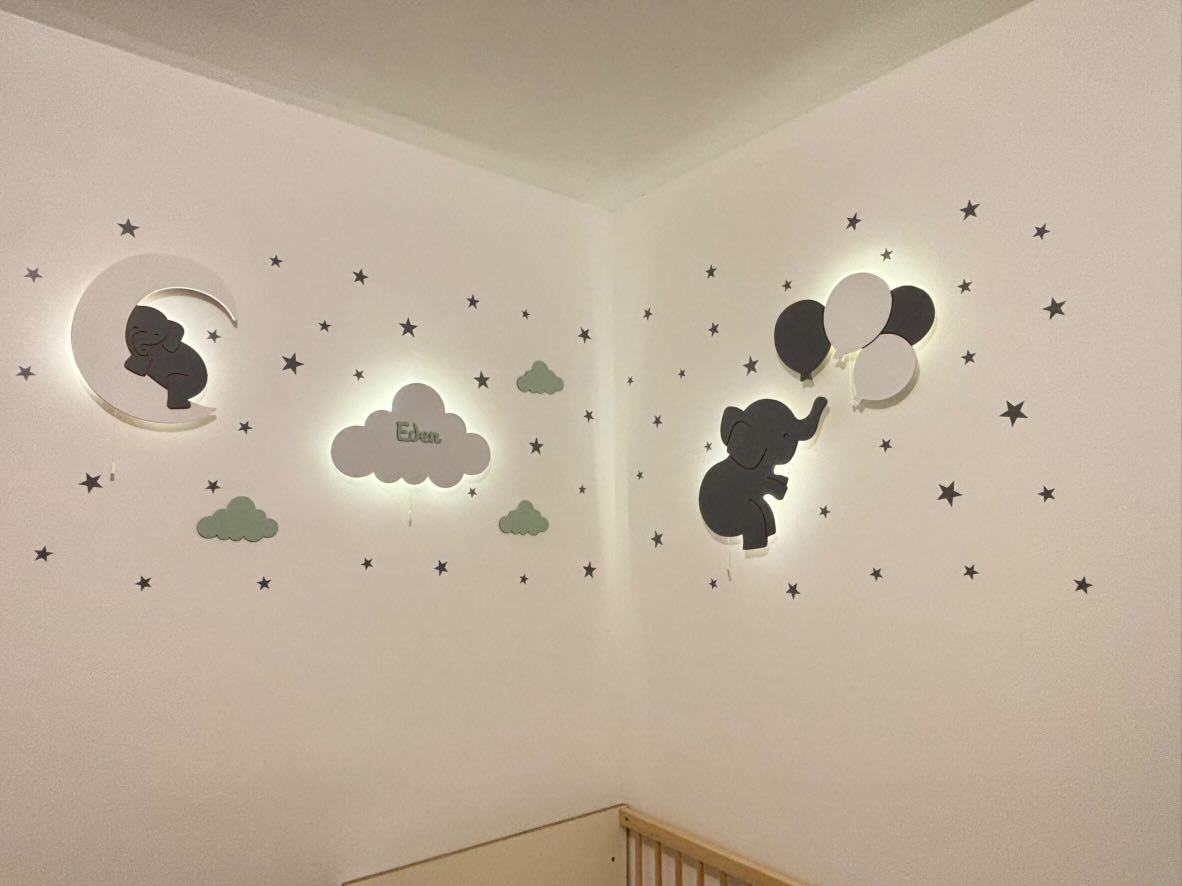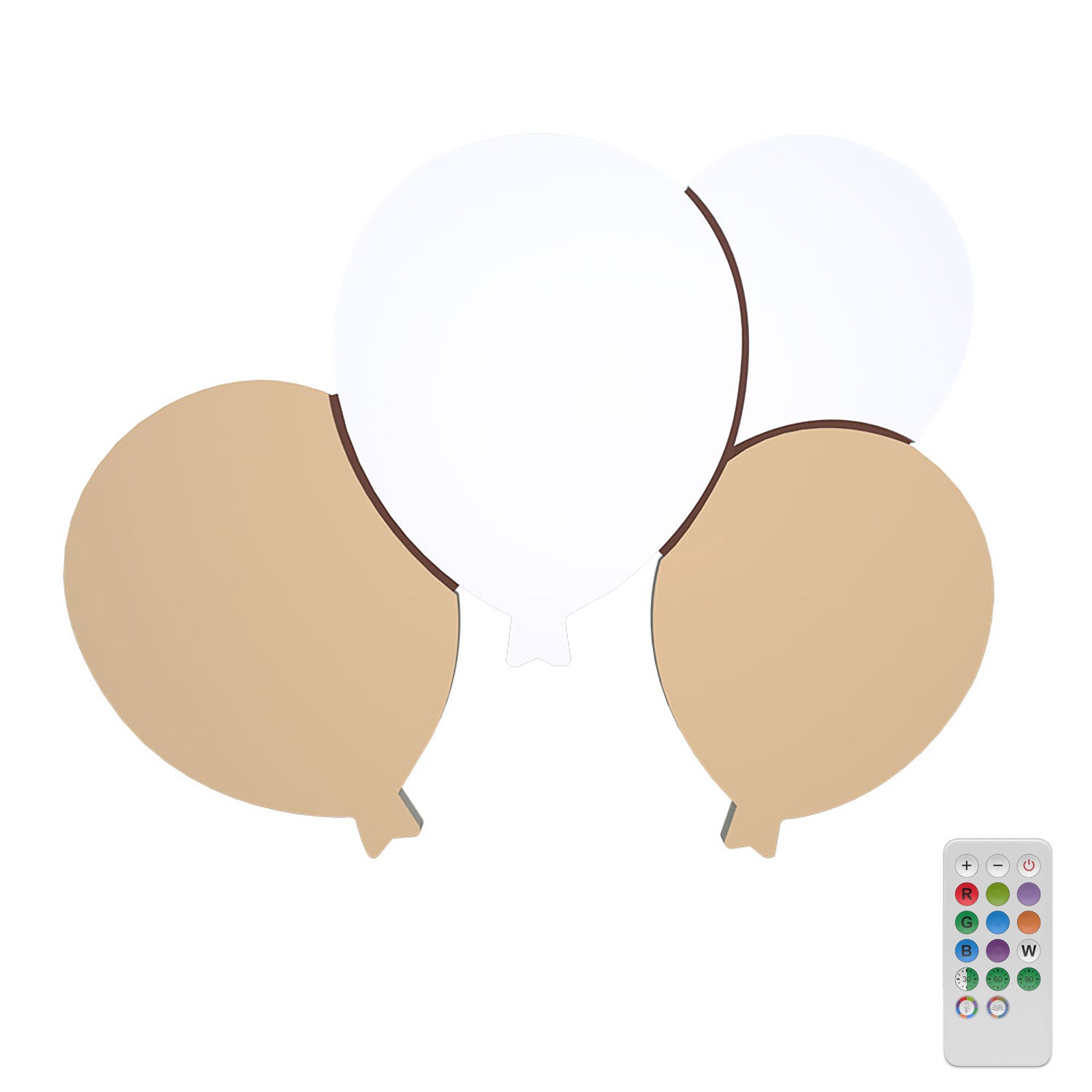The lighting in a child's room plays a key role in their comfort and development. A well-chosen light can help create a reassuring environment, promote good sleep, and even influence their mood on a daily basis. It's not just about aesthetics, but also about safety and well-being.
In this guide, you will discover simple and effective tips for adjusting the lighting for every moment of the day, taking into account your child's specific needs, from playtime to rest time. The goal: to create a bright, warm space that is perfectly designed for them.
The importance of good lighting in a child's room
The light in a child's room is not only used for visibility: it directly influences their well-being, mood, sleep, and even their ability to concentrate. Thoughtful lighting can truly make a difference in their daily life. Here are some essential points to keep in mind:
Vary the light sources:
Linknight light to reassure the child at night.
Prefer adjustable LED bulbs
They allow for adjusting the brightness according to the time of day, while being gentle on children's sensitive eyes.
Bet on playful lighting fixtures that are suitable for the child's universe.
This stimulates their imagination and makes the room more welcoming, while ensuring safety.
Bring in as much natural light as possible
It helps regulate the wake-sleep cycle and promotes good mood as well as concentration.
Ensure safety
Secure the lamps well, hide the cables to prevent tripping, and choose night lights that do not heat up to avoid any risk of burns.
Good lighting in a child's room is therefore not limited to aesthetics. It helps create a healthy, safe, and stimulating environment to support their daily development.
Light, sleep, and good mood: a winning trio
Linksleep quality.
During the day, natural light stimulates energy, concentration, and good mood. By adjusting the light intensity to the rhythm of the day, brighter in the morning and softer in the evening, we create a balanced environment conducive to both rest and moments of wakefulness.
Adequate lighting to preserve eyesight and promote child development

Good lighting in a child's room is essential for their visual health. Well-distributed light reduces eye strain and prevents headaches, especially during activities like reading or doing homework. Insufficient or poorly directed lighting can lead to increased tension in the eye muscles and distracting shadows, forcing the eyes to constantly adjust.
Children are particularly sensitive to blue light, as their lens filters this light less effectively than that of adults. Excessive exposure can cause visual disturbances and disrupt sleep. It is therefore recommended to use dimmable LED bulbs and to favor natural light during the day, while avoiding overly intense light sources in the evening.
Well-thought-out lighting supports not only visual health but also the cognitive and emotional development of the child, by creating an environment conducive to concentration, relaxation, and flourishing.
A versatile lighting for your child's well-being
Well-thought-out lighting in a child's room is essential for creating an environment conducive to their daily activities and comfort. A LED ceiling light provides uniform general lighting, ideal for playing, learning, and relaxing. Using dimmable bulbs allows for adjusting the brightness according to the times of the day and the specific needs of the child.
In addition, a bedside lamp with a soft bulb provides warm supplementary lighting, perfect for evening reading or creating a soothing atmosphere before bedtime. Finally, maximizing the entry of natural light into the room promotes concentration and regulates the child's sleep-wake cycle, thus contributing to their overall well-being.
Classic lamps: combining functionality and decoration in the child's room
THE wall lamps Classics are key elements to complete the lighting of a child's room. Placed on a bedside table, a desk, or a dresser, they provide focused light ideal for reading, drawing, or relaxing. Beyond their utility, these lamps can also become true decorative objects.
By choosing models with playful shapes or bright colors, they bring a touch of cheerfulness to the room while reflecting the child's personality. It is important to prioritize durable materials and designs suitable for the youngest to ensure their safety. Thus, classic lamps help create a warm and functional atmosphere, conducive to the child's development.
Natural light: a valuable ally for children's development

Encouraging the entry of natural light into a child's room is essential for their overall well-being. It regulates their biological clock, facilitating quality sleep and a gentle wake-up. This light also stimulates the production of serotonin, contributing to a stable and positive mood.
Moreover, sufficient exposure to daylight improves concentration and cognitive performance while reducing eye strain. To maximize these benefits, it is recommended to arrange the room to allow as much natural light as possible, using light curtains and placing the desk near a window. Thus, natural light becomes a true asset for the harmonious development of the child.
Night lights: creating a calming and safe atmosphere
Linksoft light and reassuring, ideal for creating a calm atmosphere conducive to the child's sleep. They facilitate nighttime moments, such as feedings or diaper changes, by providing sufficient brightness without disturbing the child's rhythm. For optimal use, choose night lights with adjustable brightness, allowing you to adjust the light level according to needs.
Models with playful designs add a decorative touch while harmoniously fitting into the child's room. Ensure that the night light is made from safe materials and complies with current safety standards to guarantee a secure environment. In short, night lights combine practicality and aesthetics, contributing to a comfortable and secure sleeping environment for your child.
Avoid these lighting mistakes in your child's room
Inappropriate lighting in your child's room can affect their well-being and development. Here are common mistakes to avoid:
Lighting that is too weak or too intense
Insufficient lighting can lead to eye strain and disrupt the child's sleep, while overly bright light can be dazzling and cause headaches. It is recommended to have general lighting of about 450 lumens per square meter in the child's room.
Use of unsuitable bulbs
Some bulbs, particularly LEDs with a high blue component, can be too dazzling for children's sensitive retinas and disrupt their circadian rhythm. It is advisable to choose bulbs with low blue emission and to opt for very low voltage lamps to minimize risks.
Neglecting security aspects
Safety must be a priority in the selection and installation of lighting fixtures. Ensure that the cables are securely fastened and out of reach of children to avoid the risks of falling or electric shock. Opt for sturdy fixtures, with shatterproof shades and bulbs that do not overheat.
By avoiding these mistakes, you will help create a bright, safe environment that meets your child's needs, thus promoting their well-being and development.
Tips for optimal lighting in the child's room

The lighting in a child's room plays an essential role in their well-being, development, and the quality of their sleep. Here are some recommendations for setting up suitable lighting:
Select appropriate bulbs
Choose dimmable bulbs that allow you to adjust the brightness according to the child's activities, whether it's playing, studying, or sleeping. Energy-efficient LED bulbs emit a soft, non-glare light, thus preserving visual comfort and the environment. Favor warm tones for a soothing atmosphere, while considering color temperatures to stimulate attention during wakeful moments.
Diversifying light sources
To meet the varied needs of the child, integrate multiple sources of light:
General lighting: A ceiling light or pendant providing uniform light throughout the room.
Accent lamps: Bedside or desk lamps for reading or studying moments.
Natural light: Encourage the entry of daylight to regulate the circadian rhythm and improve mood.
Night lights: Soft lights to reassure the child during the night without disturbing their sleep.
This variety creates a flexible atmosphere, adapting to different activities and moments of the day.
Choose playful and safe lighting fixtures
Linkdecorative touch to the room. Make sure that these light fixtures are made from unbreakable materials and that the cables are out of reach to ensure safety.
Opt for adjustable lighting options
Lighting fixtures with adjustable intensity and color allow for modulation of light according to specific needs:
Reading and study: Bright light for optimal concentration.
Relaxation and sleep: Soft lighting in warm tones promoting relaxation.
This flexibility helps create an atmosphere suited to each moment, contributing to the overall well-being of the child.
Prioritize safety and comfort
Safety is paramount in lighting design:
Secure fixation: Ensure that all fixtures are securely installed to prevent any risk of falling.
Cable management: Hide or secure cables to prevent accidents.
Temperature of light fixtures: Choose night lights and lamps that do not overheat, thus reducing the risk of burns.
By taking all these elements into account, you will create a bright, safe children's room that is conducive to their development.







